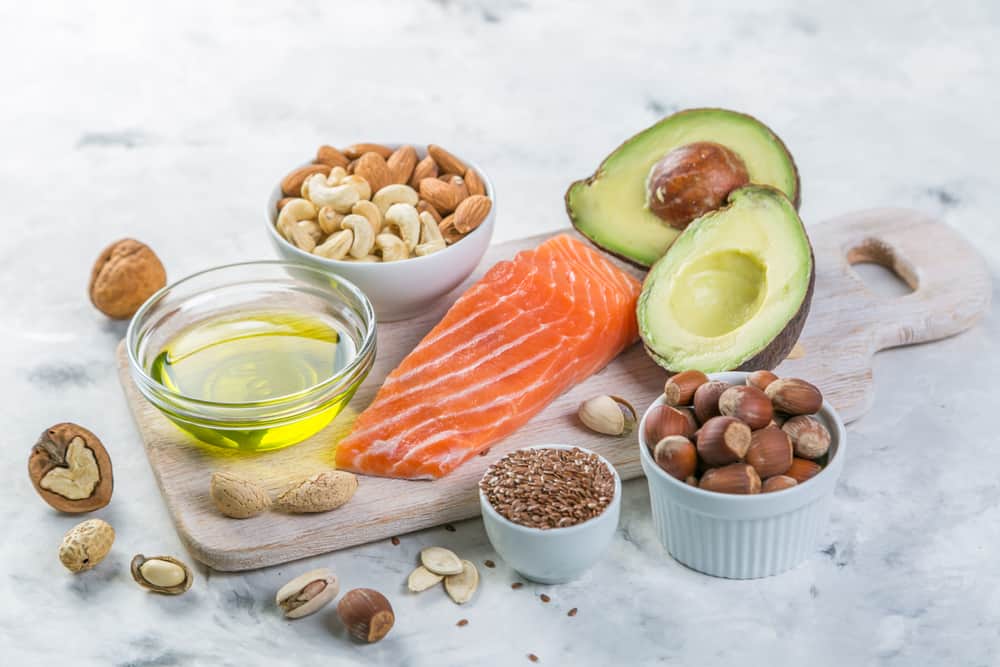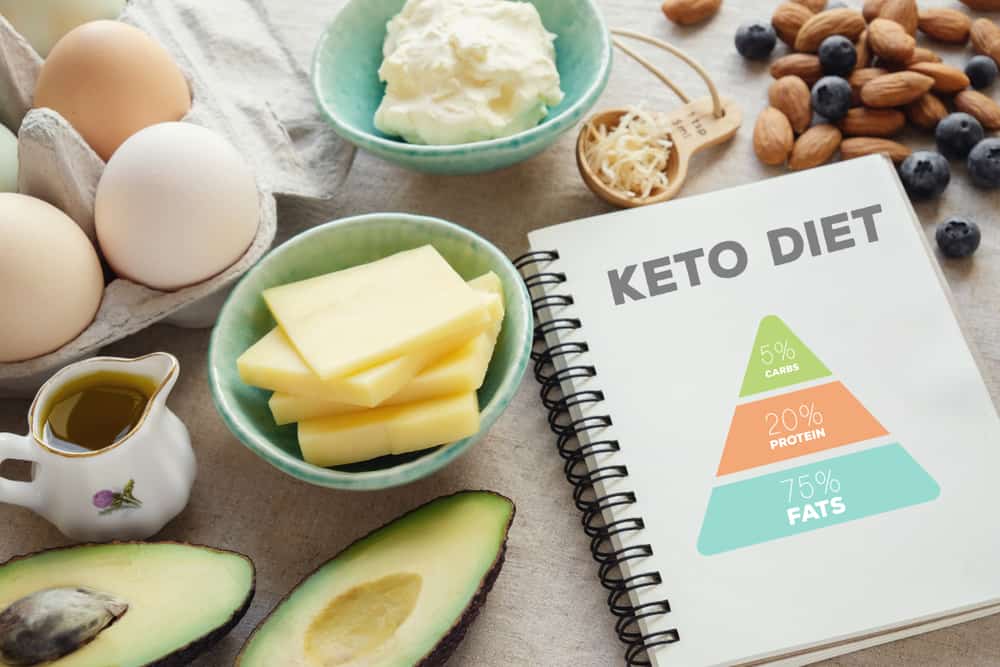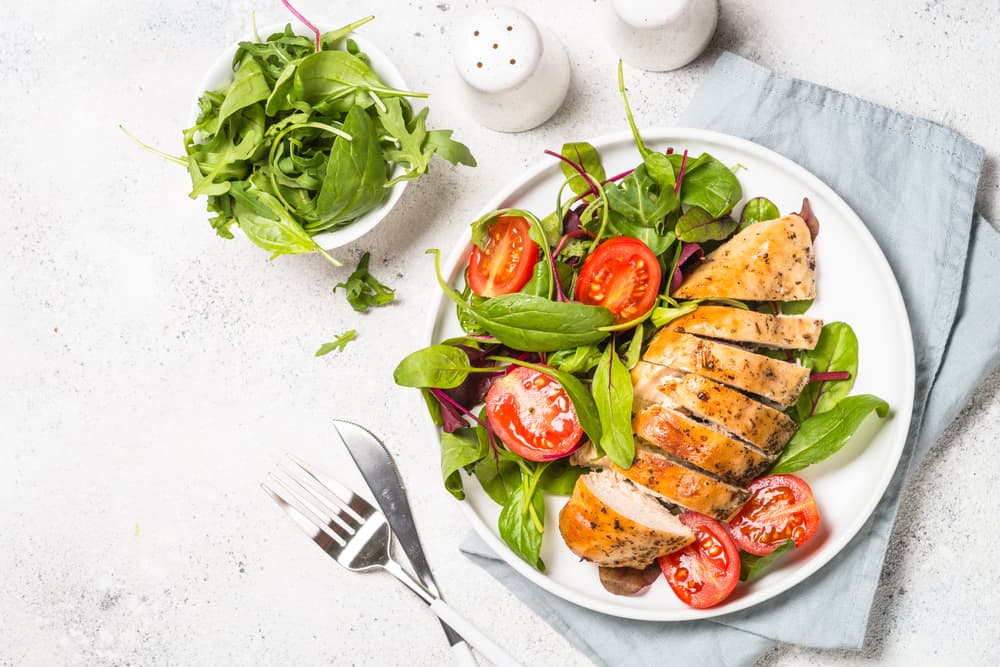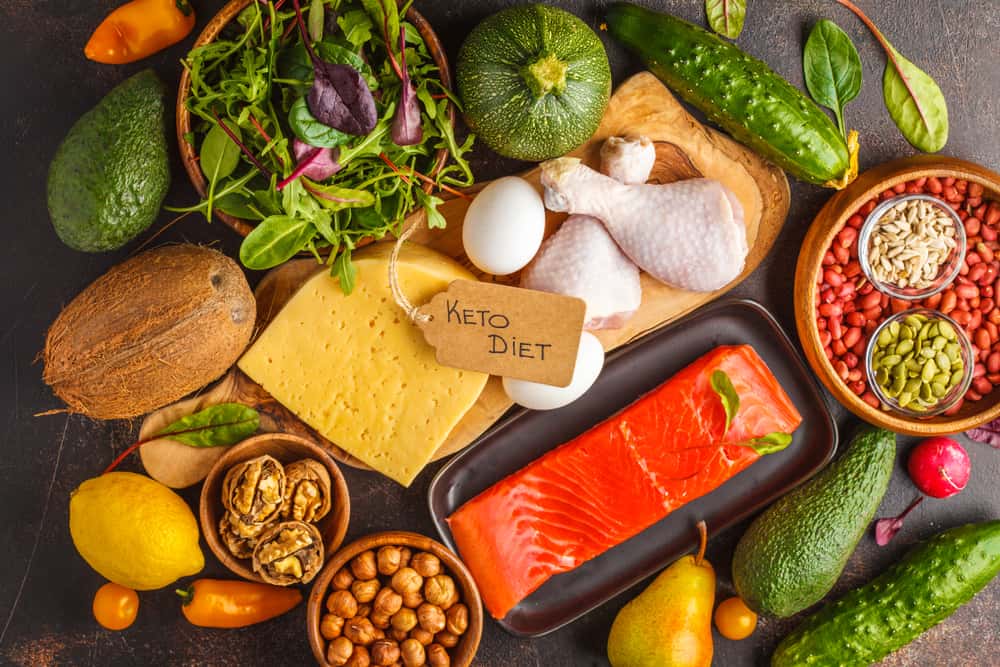The New Modified Keto Diet: Keto 2.0
Keto is one of those diet plans that have been around for ages and just keeps popping its head up to say hello every once in a while. For the last several years, keto and keto 2.0 has been the hot ticket diet – one that tens of thousands of people claim helped them lose weight that they couldn’t lose any other way.
There’s little doubt that keto is effective for weight loss, at least in the short term while you can stay on the diet. The heavy restrictions on carbohydrates and extremely high fat intake are hard to maintain long-term. However, it’s this strictness that created the need for a hybrid diet. In this case, Keto 2.0 was born.
Unlike traditional or classic keto diets, which suggest up to 80% of calories from fat, Keto 2.0 suggests far less rigid macronutrient intake. You can consume 55% of calories from fat, 30% from protein, and 15% from carbohydrates.
Before digging deeper into the modified Keto 2.0, let’s take a look back at where it all started.
History of the Keto Diet
The classic keto diet was developed in 1923 by Dr. Russell Wilder of the Mayo Clinic, according to StatPearls. Initially, the diet was created to treat children with epilepsy.
More research published in Trials shows the diet’s effectiveness when it comes to this condition as well. In 2008 at the Great Ormond Street Hospital, a clinical trial showed a 40 percent reduction in the number of seizures children experienced while on the keto diet.
Over the years, several offshoots of the keto diet have been created mostly for weight loss, but scientists and doctors have noticed other health benefits.
If you are looking for a more personalized approach to your diet, then Noom may be the answer. This program offers custom meal plans, access to a personal coach, and food logging to help users lose weight. If you are ready to try the Noom program for yourself, make sure to check out their free trial offer.
What is the Basis of a Keto Diet?
The keto diet is also called a ketogenic diet. It has been around since the 1920s and is extremely popular among the weight loss community.
Whether classic keto or Keto 2.0 or any other variations of the diet, of which there are several, this kind of meal plan is high in fat with a meager amount of carbohydrates and protein. Keto 2.0 is like the Atkin’s diet, with a slightly lower carb count.
To be successful and lose weight on Keto 2.0, a person must drastically reduce the number of carbs they consume per day. When the body does not get a ton of carbs, it enters a ketosis state, scientifically known as ketogenesis.
Ketogenesis is a metabolic state that produces ketones, according to research from StatPearls Publishing. Instead of using carbs, the body uses ketones as energy. When the body doesn’t get enough carbs to sustain processes and fat is abundant, it automatically goes into ketosis.
The fewer carbs the body gets, the more fat stores are used for energy, resulting in weight loss. When the body enters ketosis, it becomes highly effective at burning stored fat as energy.
Types of Keto Diets
There are five types of keto diet. The macronutrient ratio defines each type. Macronutrients or macros are the energy-providing elements found in food that give the body the fuel it needs to function. Macros include protein, carbs, and fat.
There are several versions of the ketogenic diet, according to the Indian Journal of Medical Research. It’s essential to understand how each diet is different. Below are the different types. It is important to remember that not everyone loses the same amount of weight with the same calorie intake and macro units.
- Classic Keto – When the classic keto diet breaks down, it is 90% fat, 6% protein, and 4% carbohydrates.
- Keto 2.0 – The Keto 2.0 diet is broken down into 55% fat, 30% protein, and 15% carbs.
- Standard Keto – The standard keto diet, when broken down, is 70% fat, 20% protein, and 10% carbs.
- Cyclical Keto Diet –The cyclical keto diet is a lot different than the others. There are no specific macros involved. Low carbs are still necessary, as are high fats. This diet requires five days of low carbs and two days of high carbs. It is geared towards athletes but can be followed by anyone. The recommended carbs are 30 grams or less, protein is 150 grams, and the rest is fats. The macros are 60% carbs, 25% protein, and 15% fats on the carb-loading days.
- Targeted Keto Diet – This diet is a slightly revised version of the original classic keto diet. Here, the dieter adds carbs consumed with a protein shake before or during an intense workout.
- High Protein Keto Diet – This diet is similar to the classic keto diet but incorporates more protein. The macro ratio is 5% carbs, 35% protein, and 60% fat.
Only the classic and high protein keto diets have been researched comprehensively. The cyclical and targeted keto diets are more for athletes but still an option for people who want to lose weight.
Ketosis
Ketosis is a metabolic state in which your body uses fat for fuel instead of carbs. Ketosis happens when the number of carbs that are usually consumed is significantly reduced. This limits the body’s allocation of glucose, which is the primary source of energy for cells.
Following a keto diet is the most successful way to achieve ketosis. Commonly, this involves limiting carbohydrate consumption to less than 50 grams in 24 hours. Instead of carbs, the person eats mostly fats and protein such as fish, nuts, lean meats, eggs, and healthy oils.
A moderate amount of protein is allowed. However, protein also turns into glucose when eaten in large quantities, defeating the low carbs and preventing ketosis.
Many people also practice intermittent fasting, according to Obesity (Silver Spring). Fasting may help a person go into ketosis quicker.
There are several periodic fasting options available. The most common is 16:8 fasting. Nothing is consumed, aside from water and other non-caloric beverages, for 16 hours. All meals are consumed in eight hours before fasting starts again.
To determine if your body is in ketosis, there are two main options. First are urine test strips, which detect ketones in urine. Typically, the darker maroon the color, the deeper in ketosis you are.
The second option is newer and significantly more expensive. Like those used to test blood sugar, blood testing kits are available to test for ketone bodies in blood.
Keto 2.0 Tips for Success
Starting Keto 2.0 is exciting and challenging. While the person is excited to see the health benefits and results, they sometimes don’t realize how difficult it can be to stick to a ketogenic diet. Luckily, there are several tips to help make it easier.
The best place to start is to become familiar with food labels. Check the carbohydrates, fat, protein, and fiber amounts. This will help you figure out how you can still eat your favorite foods on the Keto 2.0 diet.
Even with a modified keto diet, you need to know what foods to eat and what foods to avoid.
Foods to Eat on Keto 2.0
You should base most of your meals around the following types of foods:
- Artichoke
- Arugula
- Avocados
- Bell pepper
- Bok choy
- Broccoli
- Brussels sprouts
- Butter & cream, full-fat
- Cabbage
- Carrots
- Cheeses
- Condiments like spices, herbs, salt, and pepper
- Eggplant
- Eggs
- Green beans, fresh, frozen, canned in a pinch
- Fatty fish like tuna, trout, salmon, and mackerel
- Healthy oils, avocado, extra virgin olive, and coconut
- Kale
- Low carb vegetables – green veggies (the darker, the better), peppers, tomatoes, and onions, etc
- Meat – Lean red meat, ham, chicken, sausage, turkey, and bacon
- Nuts and Seeds like pumpkin seeds, almonds, chia seeds, walnuts, and flaxseeds
- Okra
- Pumpkin
- Spinach
- Swiss chard
Keep track of the foods you are eating and stay on track with your diet with Noom. Check out the free trial offer from Noom to see if this program is right for you.
Foods to AVOID on Keto 2.0
Even on a modified keto diet, you must be careful of the carbohydrates. You want to limit foods high in carbs.
The following list of foods should be avoided or limited to a Keto 2.0 diet.
- Alcohol, certain liquors are zero carbs, but the body will burn the calories from alcohol before burning fat
- Condiments or sauces with added sugar
- Cake
- Candy
- Carrots
- Cereal
- Desserts
- Fruit, certain fruits are lower carb, like blueberries
- Grains & Starches
- Low fat or diet products
- Root vegetables like potatoes
- Unhealthy fats like vegetable oil, processed oils
- Legumes, beans, peas, kidney beans, lentils
- Candy
- Smoothies
- Sweeteners
- Rice
- Regular sweetened soda
Keto 2.0 Approved Snacks
Keto approved snacks are healthy and will fill you up quickly.
- Fatty fish or lean red meat
- Beef jerky
- Cheese
- A handful of seeds or nuts
- Olives
- Hard-boiled eggs
- Deviled eggs
- Bell peppers or celery with salsa and guacamole
- 90% dark chocolate
- Plain cottage cheese with a few strawberries
- Keto-friendly snack bars
- Fat bombs
Meal Prepping for Keto 2.0 Success
Go one step beyond planning a menu and prep a large portion of the food to be eaten during the week. Prepping will save time and prevent you from eating quick and easy foods that are not on the diet after a long day.
Keep in mind certain foods will not stay fresh for a full seven days. If green salad is one of your top meal selections, it may be best to make a fresh salad each evening from vegetables you previously prepped. Mixing salad vegetables and storing them in the refrigerator overnight can cause drooping.
Not all foods are suitable for reheating. That shrimp dish may be perfect right out of the oven, but shrimp can get rubbery when reheated. You will find that certain foods, especially proteins, are best cooked on the day of, rather than ahead of time.
Purchase meal storage for prepared meals and leftovers. Get some for lunch and dinner with dividers. Create meals in each container and pop them in the refrigerator. Before you leave for work or get home, you just have to take one out and warm it up, and a meal is served.
Some meal delivery sites offer keto diet options. Meal delivery is convenient if you don’t have time to meal prep. You can also try some frozen keto meals if you’re in a hurry, but be wary because the sodium content in frozen meals tends to be high.
There are tons of apps, cookbooks, blogs, and keto-friendly websites and include modified keto diet recipes. Many of them even provide a shopping list of the ingredients you will need to prepare the meals. It just requires a little research to find delicious keto foods.
Sample Keto 2.0 Meal Plan
- Breakfast: Omelet with cheese, peppers, onions, salsa, and spices
- Lunch: Chicken salad and celery sticks with a handful of blueberries
- Dinner: Chicken breast stuffed with cream cheese and pesto, with a side of seasoned grilled zucchini
How is Keto 2.0 Different Than the Classic Keto Diet?
On the Keto 2.0 diet, you are allowed more carbs. The diet is still a low carb diet and still allows the dieter to lose weight and enjoy other health benefits. The object of increased fat intake is to trick your body into burning fat as a source of energy.
Everyone is different, and the way they gain and lose weight varies. Ideally, on Keto 2.0, you need to have a 2,000-calorie daily intake. The ratios are 15% to 30% of your calories should come from protein sources, 60% to 75% should come from fats, and the remaining 5% to 10% should come from carbohydrates.
It would be best if you aimed to consume less than 50 carbs a day, which is quite a bit more than the classic keto diet at under 25 grams of carbohydrates a day. This is how people can continue to eat their favorite foods within reason, not crave them, and binge eat them, ruining their diet.
What many people do not realize is that carbs are carbs whether they are considered healthy or not. Carbs from fruit should be allowed, but most of them are not – a medium-size apple has 25 grams of carbohydrates. That is half your carb allowance for the day. Almost every food has at least one carbohydrate in them. For example, a cup of green beans (on the allowed list) has seven grams of carbs. You could cut the cup to half a cup and only have 3.5 carbs. However, the point being food has carbs!
If you hope to achieve the metabolic state of ketosis on a modified keto diet, you must keep a close eye on everything you eat and make sure you add those carbs up. Luckily, you have a high amount of fat you can consume. Fat is filling and produces ketones that cause ketosis. The high fat count allows you to follow the diet without being hungry and still lose weight.
If you are ready to lose weight for good, a clinically-research program like Noom may be the answer you are looking for. Their program offers tons of psychology-backed tactics to help users make lasting change to their lifestyle. With Noom you can take advantage of a free trial offer for a limited time.
Comparison: Classic Keto vs. Keto 2.0
Keto 2.0 strives to make the keto diet a well-balanced diet despite fat, protein, and carb ratios. You can consume more vegetables, fruits, and proteins than in the classic keto diet. Keto 2.0 allows for more wiggle room with healthier, more complex carbs such as oats and beans, which the classic keto frowns upon.
Another big perk, you’ll get more fiber in your diet on Keto 2.0 (compared to classic keto)—and fiber helps keep your appetite satisfied. In other words, it is filling.
Pros and Cons of Keto 2.0
Some pros and cons come with every diet. You must look at and ask yourself if the pros and cons even out enough to get the diet a chance. If you are uncertain from the beginning, chances are the diet will not work for you because you will not stick to it.
The Pros of Keto 2.0 Diet
The keto diet comes with several benefits that you may not even be aware of. You may start the diet with weight loss being the only thing on your mind and be surprised by the other benefits.
Weight Loss
When the body goes into ketosis, it is in a fat-burning mode. By cutting carbohydrates, the body retains less water, which leads to the loss of water weight. As fat is consumed for fuel, you lose fat as well.
Suppresses the Appetite
Not only do you lose weight when your body enters ketosis, but you also lose weight because a high-fat diet suppresses appetite, making you feel fuller for longer. Which results in eating less, very few if any cravings, and extra energy for exercise.
Improves Sleep, Energy, and Mood
People in the metabolic state of ketosis sleep more soundly for a shorter period and wake up feeling energized and ready to face the day.
Boosts Energy
After you have eaten an enormous meal loaded with carbs, you feel tired and uncomfortable. This is because all those carbs caused your glucose to spike for a short time. Then when the glucose suddenly drops, you crash from your carbohydrate high.
The Cons of the Keto 2.0 Diet
While there are several advantages to the keto diet, there are always at least a few disadvantages.
Requires an Adjustment Period
Getting used to the Keto 2.0 diet can take up to a couple of weeks. Your body is not used to the drop in carbs. Most people eat more carbs in one snack than a person on Keto 2.0 does all day. That is a big adjustment for the body. The body can react to that in the form of keto flu.
With the “keto flu,” the person experiences flu-like symptoms until their body adjusts to the new lower carb way of eating, according to Frintiers in Nutrition. The keto flu has the following symptoms.
- Fatigue
- Nausea
- Muscle aches
- Headaches
- General “unwell” feeling
Because of the restricted carbohydrate intake, your body doesn’t retain as much water, so electrolyte loss is common. Drinking sugar-free Gatorade may help restore some of the lost electrolytes and get you back on your feet and feeling great again.
Can Cause Irregularity
Significantly increasing fat intake while severely cutting carbohydrates and consuming less fiber may cause constipation. It can also cause diarrhea, although that is not as common.
The gastrointestinal issue will settle down and return to normal in a few weeks when your body has adjusted to the Keto 2.0 diet. In the meantime, add more fiber to your diet a little at a time. Fiber is a carbohydrate, but the body cannot digest it, so it’s not counted against your daily goal.
Restricts Certain Foods
If you are not a sugar junkie when starting a keto diet, you shouldn’t have any difficulties. It’s the people who enjoy a sugary dessert after dinner each night, a weekly or daily candy bar, or a morning muffin with their coffee that struggle the most with the diet.
The idea alone of not being able to have their favorite foods and changing their entire diet and way of eating is overwhelming. These are the people who need to start with a modified keto diet and work their way into a full keto diet.
Keto even limits the type and amount of fruits consumed because of their sugar and carb counts. Yes, the fruit has natural sugar that isn’t as bad for you as the sugar in soda, candy, cake, etc. However, sugar is sugar, and if you want to be successful at the keto diet, you have to follow it correctly. On a modified diet, you can have more carbs, so a piece of fruit a day may not be a problem if it is on the allowed list of foods. However, your sugar and carb cravings will disappear in a few weeks.
Social Gatherings & Dining Out
Social gatherings and dining out can be challenging. You will have to plan and research. If you look at the restaurant’s menu before you go, you’ll be able to select your meal and stay within your allotted macros. When attending social gatherings such as holiday parties, birthdays, weddings, showers, etc., you probably won’t know what’s on the menu until you get there, so you will have to use self-control and only eat things you know are low in carbs, such as raw vegetables, lean meats, poultry, and salads and skip the cake.
Eating out doesn’t have to be so hard though, especially when you have a program like Noom in your corner. To try out Noom‘s food logging, custom meal plans, and educational tools, make sure to check out their free trial offer.
Recipes for Keto 2.0
These recipes are all Keto 2.0 friendly, quick, easy to make, and delicious to eat. These recipes generally make enough for at least four servings.
Sausage and Egg Breakfast Casserole Recipe
Ingredients:
- 8 large eggs
- 1 cup of uncooked sausage, crumbled
- 1 cup of greens such as beet greens, swiss chard, spinach, or kale
- 1/2 cup of fresh parsley, chopped
- 2 tablespoons of avocado oil
Servings: 4
Instructions:
- Preheat the oven to 375 degrees Fahrenheit.
- Crack and whisk the eight eggs in a bowl, set them aside.
- Slice selected greens into thin strips.
- Sauté the greens in the avocado oil over medium heat until they are cooked.
- Cook the sausage on medium heat until done.
- Spray an 8X8 pan or square glass baking dish with avocado oil.
- Stir the greens, parsley, and sausage into the egg mixture.
- Pour the egg mixture into the sprayed 8X8 pan—Cook for 20 minutes, or until the mixture is firm and starting to brown on the top.
Nutrition:
- Fat 22g
- Protein 20g
- Carbs 2.5g
Bacon-Wrapped Mini Meatloaves
Ingredients:
- 1 lb. lean ground beef
- 1/2 lb. of bacon, chop into small pieces
- 8 more strips of bacon
- 1/4 cup of coconut milk
- 2 garlic cloves, minced
- 1/3 cup of fresh chives, minced
Servings: 4
Instructions:
- Preheat the oven to 400 degrees Fahrenheit.
- In a big bowl, combine the ground beef, bacon pieces, garlic, chives, and coconut milk. Mix well with a large spoon or electric mixer until the ingredients hold together.
- Season the mixture with freshly ground black pepper to taste—no need to add salt since the bacon is already salty enough.
- Take a medium-size muffin tin and place a slice of bacon around the sides of each hole.
- Fill these same eight holes with the beef mixture.
- Place in the oven and cook for 30 minutes.
- Once ready and cool enough to handle, remove the mini meatloaves from the muffin tin and serve with fresh parsley sprinkled on top.
Nutrition:
- Fat 51g
- Protein 58g
- Carbs 2g
Fat Bombs are the Bomb!
These delicious little treats will satisfy your sweet tooth. They are the perfect way to end the day and keep the cravings at bay. No sneaking to the refrigerator at 2 am for you!
Ingredients
- One cup of almond butter or sunflower butter
- 1 cup coconut oil, room temperature
- 1/3 cup coconut flour
- 1/2 cup unsweetened cocoa powder
- 1/4 teaspoon powdered stevia OR 1 or 2 tablespoons your choice of classic monk fruit sweetener
- Pinch of Himalayan salt
Servings: 30 (one bomb per serving)
Instructions
- Melt almond butter and coconut oil in a small pan over medium-low heat. Add dry ingredients and stir well until mixed.
- Let the mixture cool slightly, taste to determine if additional sweetener is needed. Add more in small amounts to reach the desired flavor.
- Pour mixture into a clean bowl and freeze until solid about one to one and half hours.
- Once stable, form into balls. Put balls on a flat freezer-safe dish for 20 to 25 minutes and then place in a Ziplock bag.
Nutrition
- Fat 12.6g
- Protein 2g
- Total Carbohydrate 1.4g
Keto 2.0: Questions & Answers
Where to find Keto 2.0 resources?
Everywhere you look, there are resources like keto shopping lists, apps, calculators, and more to help you transition from carbs for energy to fat for fuel. What you won’t find are resources expressly set up for Keto 2.0. That’s okay; you don’t need any special tools.
Every tool setup for the standard keto diet will work for Keto 2.0. The only difference is, your carb intake will be higher than the suggested carb intake for the classic keto plan.
What to expect from Keto 2.0?
Keto 2.0 is a lighter version of traditional or classic keto from one standpoint. It works to help you lower carb intake, which helps balance out blood sugar levels and hunger. It also increases fat intake, which promotes ketosis or fat burning when combined with lower carbs. If you can get and stay in ketosis, you may notice substantial weight loss, but it may be difficult with a higher carb intake.
Does Keto 2.0 start with an Induction?
Every formal keto diet we’ve reviewed and researched has started with some sort of induction phase. During induction, carb intake is cut dramatically, sometimes to as low as 10 grams of carbs or less per day. This allows the body to burn through carb stores faster, so you get into ketosis and start burning fat for fuel more quickly. The induction phase lasts two weeks, after which you typically increase carb intake to the levels suggested for Keto 2.0. It is during these two weeks that the “flu-like” symptoms mentioned previously may occur.
As such, this diet may not be for everyone, which is why a program like Noom that uses a personalized approach may be best. We love that the program offers custom meal plans, 1:1 coaching, educational tools, and exercise tracking to help users lose weight for good. Make sure to check outNoom‘s free trial offer if you want to try out the program for yourself.

Summer Banks has researched over 5000 weight-loss programs, pills, shakes and diet plans. Previously, she managed 15 supplement brands, worked with professionals in the weight loss industry and completed coursework in nutrition at Stanford University.





